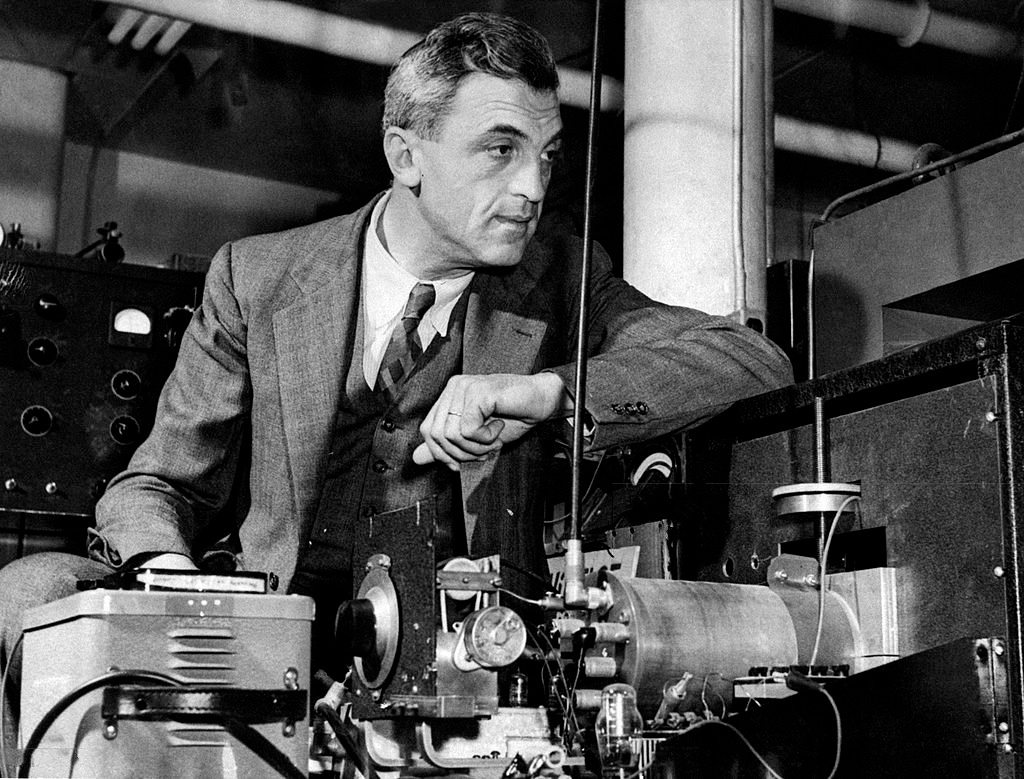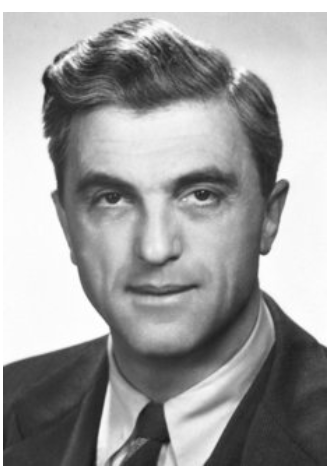1929: Bloch Wave – Electron Waves in a Crystal
Named after Swiss physicist Felix Bloch, a Bloch wave (also called Bloch State; Bloch Function or Bloch Wave Function), is a type of wave function for a particle in a periodically-repeating environment, for example electrons moving in a semiconductor such as silicon (whose atoms form a crystal lattice). The application of Bloch’s theorem helps explain the formation of valence band and conduction bands in a semi-conductor. A Bloch wave description also applies to any wave-like phenomenon in a periodic medium such as photonic crystals,phononic crystals and diffraction.

Named after Swiss physicist Felix Bloch, a Bloch wave (also called Bloch State; Bloch Function or Bloch Wave Function), is a type of wave function for a particle in a periodically-repeating environment, for example electrons moving in a semiconductor such as silicon (whose atoms form a crystal lattice). The application of Bloch’s theorem helps explain the formation of valence band and conduction bands in a semi-conductor. A Bloch wave description also applies to any wave-like phenomenon in a periodic medium such as photonic crystals,phononic crystals and diffraction.
A Bloch Wavecombines a plane wave with a periodic sequence of atomic orbitals. The amplitude of the atomic orbitals is modulated by the plane wave (shown dotted in the diagram below):

uk(r) is a periodic function (for atomic orbitals) and exp[i (k r -wt)] a plane wave (forfree electrons). For plots one usually takes the real part of exp (which is cos) and sets t=0.
 Bloch waves are important because of Bloch’s theorem, which states that the energy eigenstates for an electron in a crystal can be written as Bloch waves. This fact underlies the concept of electronic band structures.
Bloch waves are important because of Bloch’s theorem, which states that the energy eigenstates for an electron in a crystal can be written as Bloch waves. This fact underlies the concept of electronic band structures.
About Felix Bloch b. 1905 Zürich, d. 1983, Zürich

Bloch was born in Zürich, and educated at the Cantonal Gymnasium in Zürich and at the ETH, Zürich and later at the University of Berkeley in California.
Felix Bloch made fundamental theoretical contributions to the understanding of electron behavior in crystal lattices, ferromagnetism, and nuclear magnetic resonance.
The Nobel Prize in Physics 195was awarded jointly to Felix Bloch and Edward Mills Purcell “for their development of new methods for nuclear magnetic precision measurements and discoveries in connection therewith.”
Bloch was the first director general of the European Organization for Nuclear Research (1954–55; CERN).
References and further reading
- https://en.wikipedia.org/wiki/Felix_Bloch
- http://uw.physics.wisc.edu/~himpsel/551/Lectures/E_versus_k.pdf
- https://www.nobelprize.org/prizes/physics/1952/bloch/biographical/
- https://www.nobelprize.org/prizes/physics/1952/summary/
- https://en.wikipedia.org/wiki/Electronic_band_structure


Please Note:
You may use one of these HTML tags and attributes: <a href="" title=""> <abbr title=""> <acronym title=""> <b> <blockquote cite=""> <cite> <code> <del datetime=""> <em> <i> <q cite=""> <s> <strike> <strong>